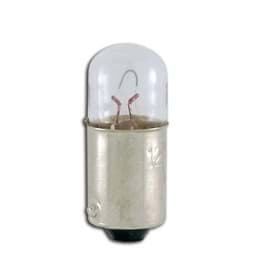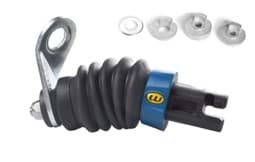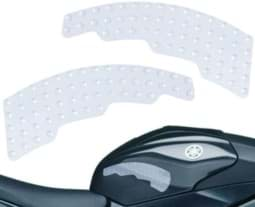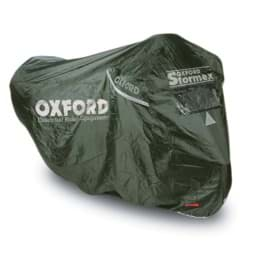Description
Almost identical in construction to the KTM neck brace. Both were developed by South African spinal specialist Dr. Leatt to minimize the risk of cervical spine injury in serious falls. All pads are removable and washable. The delivery includes all parts needed to adjust it to the body size. Three different pins for width adjustment and two different back supports. 1. Weight: 790 grams 2. Material: Carbon, fiber, and glass fiber reinforced plastic (GFRP) 3. Size: for adults, adjustable As a motorcycle manufacturer, KTM presents the neck brace as a novel protective system that can reduce the risk of injury in the cervical spine area. Not only in motorcycle sports is a helmet and appropriate safety clothing a matter of course. Maximum protection and comfort at minimal weight are the demands of active motorcycle and leisure sports enthusiasts. Despite elaborate products, the particularly sensitive cervical spine has so far represented a significant safety gap. The cervical spine is one of the most complex structures of the human body. To this day, it has been difficult to effectively protect this body part in the motorcycle sector while still ensuring sufficient freedom of movement. The Leatt neck brace now brings significant progress in passive safety equipment. KTM has collaborated with BMW on a neck protection system designed and developed by South African Dr. Chris Leatt. The Leatt neck brace is made of GFRP to keep the weight as low as possible. The system provides protection in the event of a fall according to the current state of science and technology against: 1. Hyperflexion (extreme forward movement of the head or overstretching of the head forward) 2. Hyperextension (extreme backward movement of the head or overstretching of the head backward) 3. Lateral hyperflexion (extreme lateral movement of the head) 4. Axial load (compression of the spine due to corresponding pressure on the helmet) 5. Posterior hypertranslation (backward shifting of the head on the neck) The fundamental approach of the Leatt neck brace is to control and stop the uncontrolled movement of the head/helmet in the event of a fall. This is achieved through the following features of the Leatt neck brace: 1. Energy-absorbing material on the surface and body contact area 2. Flexibility through the design of the individual components 3. Controlled break of the neck brace in extreme cases to absorb energy However, the best safety equipment makes little sense if it hinders movement while riding. Therefore, great emphasis was placed on unhindered freedom of movement when developing the Leatt neck brace. The low weight also plays a crucial role in wearing comfort. The materials used (GFRP), which are partly coated with a soft, shock-absorbing layer, reduce the weight to just 850g. Various size pins allow the Leatt neck brace to be adjusted to the rider's body size. Generally, the existing safety equipment does not need to be modified to use the KTM neck brace. The system is also compatible with most types of motorcycle helmets and can thus be used both on and off-road. Only minimal modifications are required for leather suits with a rear hump. As an additional feature, KTM offers a special rider jacket that allows for comfortable wearing of the KTM neck brace in the jacket thanks to a special collar construction. As with all KTM products, the KTM neck brace has also undergone rigorous testing in motorsport. All KTM Rally factory riders have used the neck brace in the recent Dakar Rally. I can no longer imagine riding Rally without the neck brace. After a short adjustment period, you don’t feel the brace at all. In training, I crashed at high speed – the helmet was pretty badly damaged. Normally, I have severe neck pain after such falls, but with the neck brace, I didn’t feel anything, says professional Cyril Despres, winner of Dakar 2007, sharing his experiences with the new protection system. The neck brace has also been successfully tested in motocross, where freedom of movement of the head is of extreme importance. KTM Motorsport officials Heinz Kinigadner and Pit Beirer agree that the neck brace already makes a significant contribution to more safety for motorcyclists today and can protect many active riders from serious injuries in the future.
Reviews
Be the first to review this item
There are no reviews yet
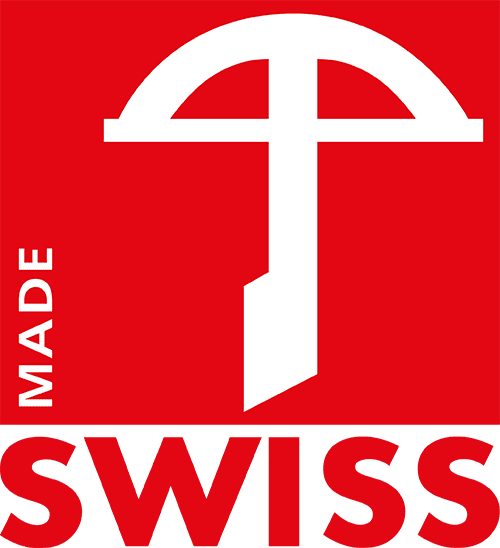 Swiss Online Shop - Free shipping from SFr. 150.-- (Switzerland and Liechtenstein)
Swiss Online Shop - Free shipping from SFr. 150.-- (Switzerland and Liechtenstein) 

